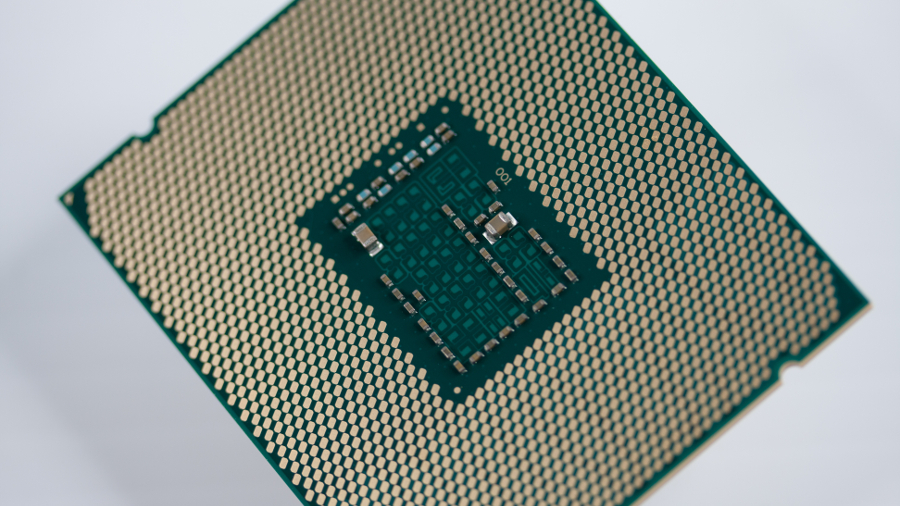Why the Celeron doesn't deserve all the hate
A much-maligned piece of hardware

There's an entry for a humble microprocessor on Urban Dictionary which was written back in 2006. The author decided to vent his frustration using very colourful language to describe, what is essentially, a piece of silicon. That product is the Intel Celeron, and the post ends with the parting shot: "Anyone with a Celeron in their computer clearly has no idea what they are doing."
"Lament", the author, doesn't seem to be the only one to think that. More than 400 people have upvoted his comment and although his vitriolic outpouring is nearly 10 years old, Intel's Celeron processor has been vilified before and ever since.
Scour the internet and it becomes evident that the Celeron is often singled out as being by far the most hated, but also most misunderstood processor Intel has ever produced (it also earned nicknames such as De-Celeron or Celeri).
This was not always the case, though. In its early days, back in the late 1990s, the Celeron was a well-kept secret in the PC community. Intel introduced it to compete with a resurgent AMD at the lower-end and the first few models were particularly popular with hardware enthusiasts.
They found out that Celeron could be very easily overclocked, saving potentially hundreds of pounds within a matter of minutes. Oh and it did multi-processing as well (remember the legendary Abit BP6 with that 440BX?). That early generation proved to be very popular, perhaps too popular for its own good.
A cunning strategy
Following that, Intel seemingly made sure that the performance gap between its entry-level products and the rest of its processor family increased.
That is done primarily using four variables: cache, clock speed, thread count and feature set. The Celeron G1850 and the Core i3-4150 are good examples of how that differentiation strategy operates.
Sign up to the TechRadar Pro newsletter to get all the top news, opinion, features and guidance your business needs to succeed!
Outside these four variables are extraneous ones, such as the type and amount of memory used as well as the type of hard drive used – that depends on the computer manufacturer, and will have a big impact on performance as well.
Part of the backlash therefore is due to the use of poorly performing parts with the Celeron. The processor itself was almost always powerful enough for most tasks including gaming if you were to pair it with a decent graphics card.
The Celeron is a better value-for-money processor especially when using new operating systems (Windows 7 or Windows 8.1). CPU Passmark, which has a leaderboard of the top 100 CPUs based on price/performance, lists two Celerons in the top five desktop processors currently available for sale. What this means is, pound for pound (or dollar for dollar), you will probably get a more balanced machine out of a Celeron.
Things are getting a little bit more complex, though, as Intel has started to mix architectures under one brand. Desktop Celeron processors currently on sale are now based either on Bay Trail, Ivy Bridge or Haswell; the first of those (starting with J, as in J1900) usually being slower than the last two (starting with G, as in G1840).
Time for a change
And to make things more complicated, vendors are also using the N-series and 10xx-series Celeron, destined for mobile platforms, in desktop computers. You can't buy the J-series, the 1xxx-series, 2xxx-series, 3xxx-series or the N-series on their own, only as barebones or in complete systems (including laptops and tablets), and it looks to stay this way.
What's clear is that manufacturers, not Intel, are the ones deciding what goes into a computer. More powerful desktop Celeron processors (G-series) actually cost much less than the slower models, sometimes by as much as 50% (albeit with a much higher power consumption), so in theory, using these should have been a no-brainer.
But this isn't happening most probably because Intel has been subsidising its laptop processors, prompting some vendors to embrace the N-series – including Intel itself – wholeheartedly.
Despite all the vitriol thrown at the Celeron over the years, the range has been Intel's second longest serving line of products after the company's Pentium headliner.

Désiré has been musing and writing about technology during a career spanning four decades. He dabbled in website builders and web hosting when DHTML and frames were in vogue and started narrating about the impact of technology on society just before the start of the Y2K hysteria at the turn of the last millennium.